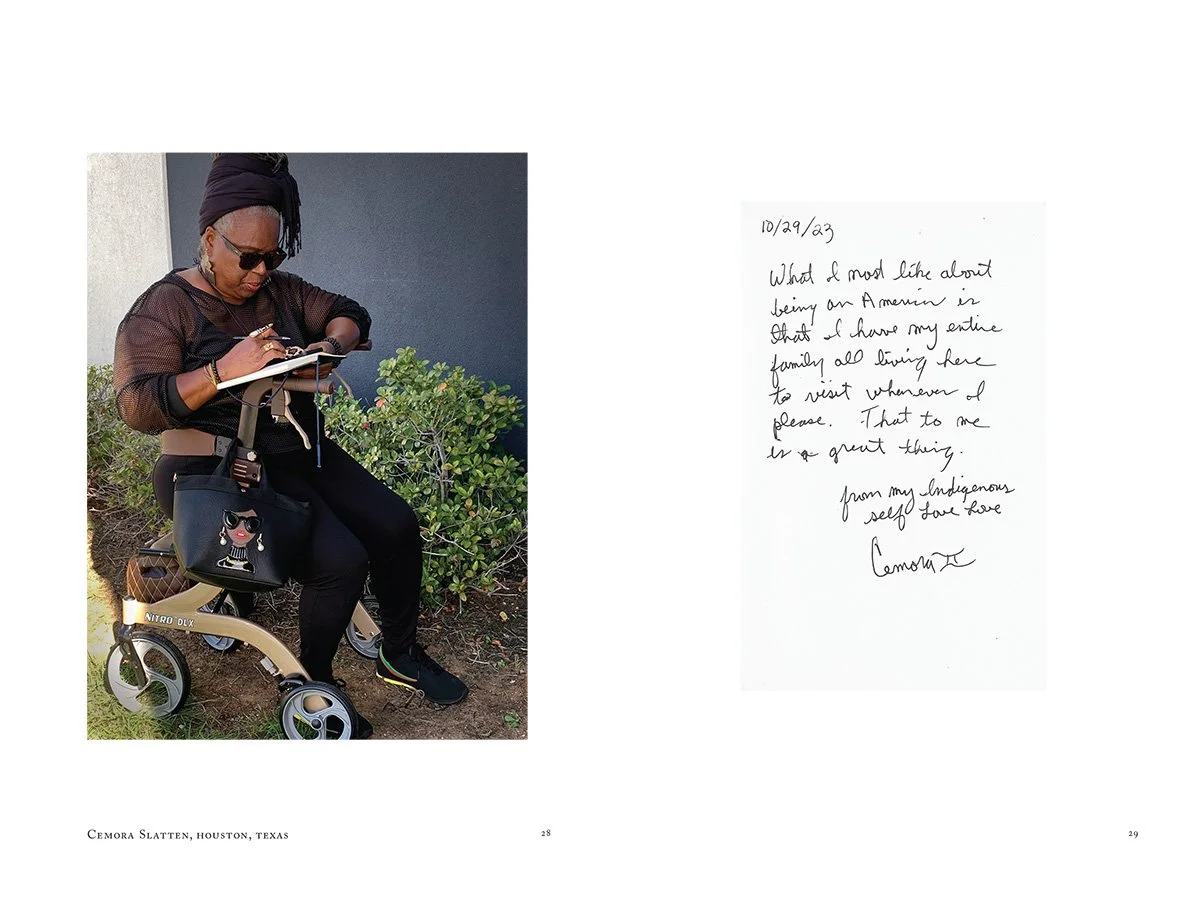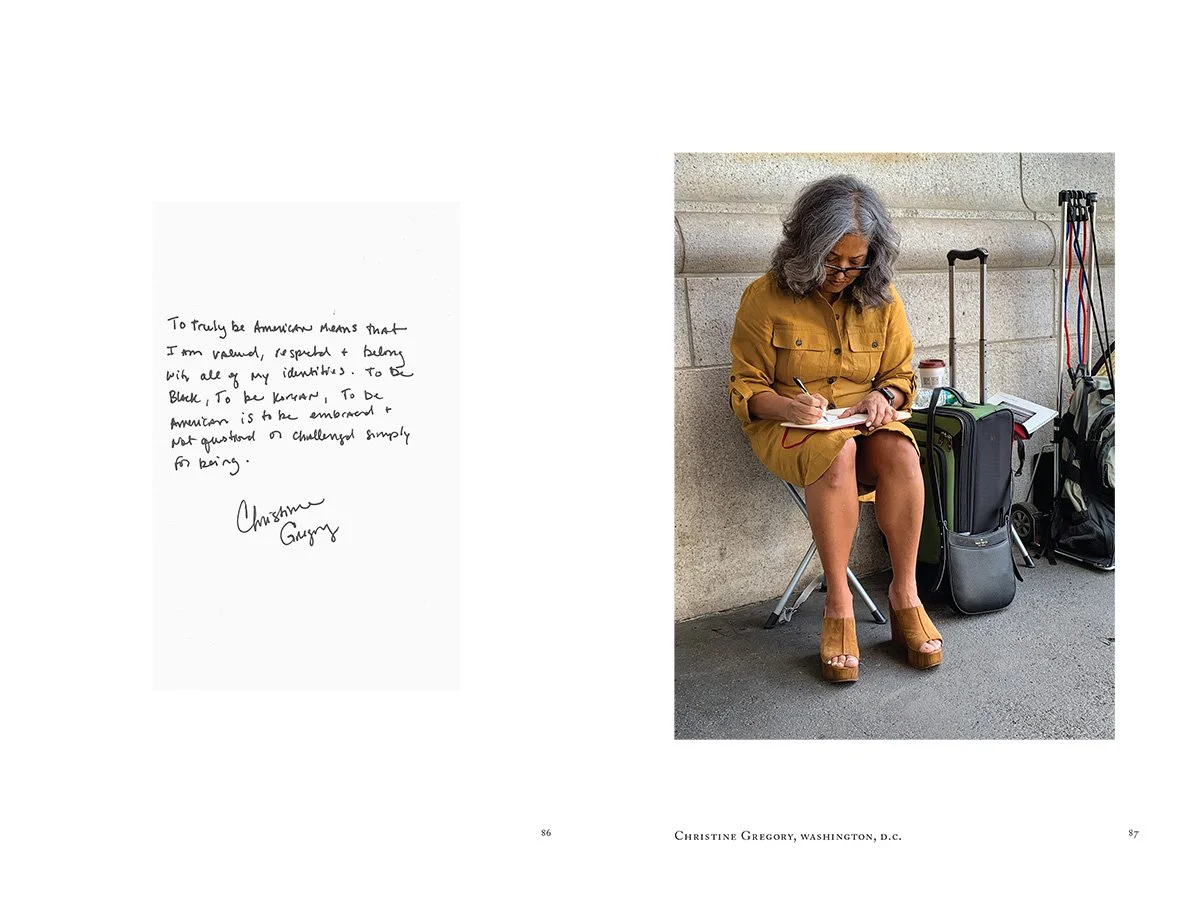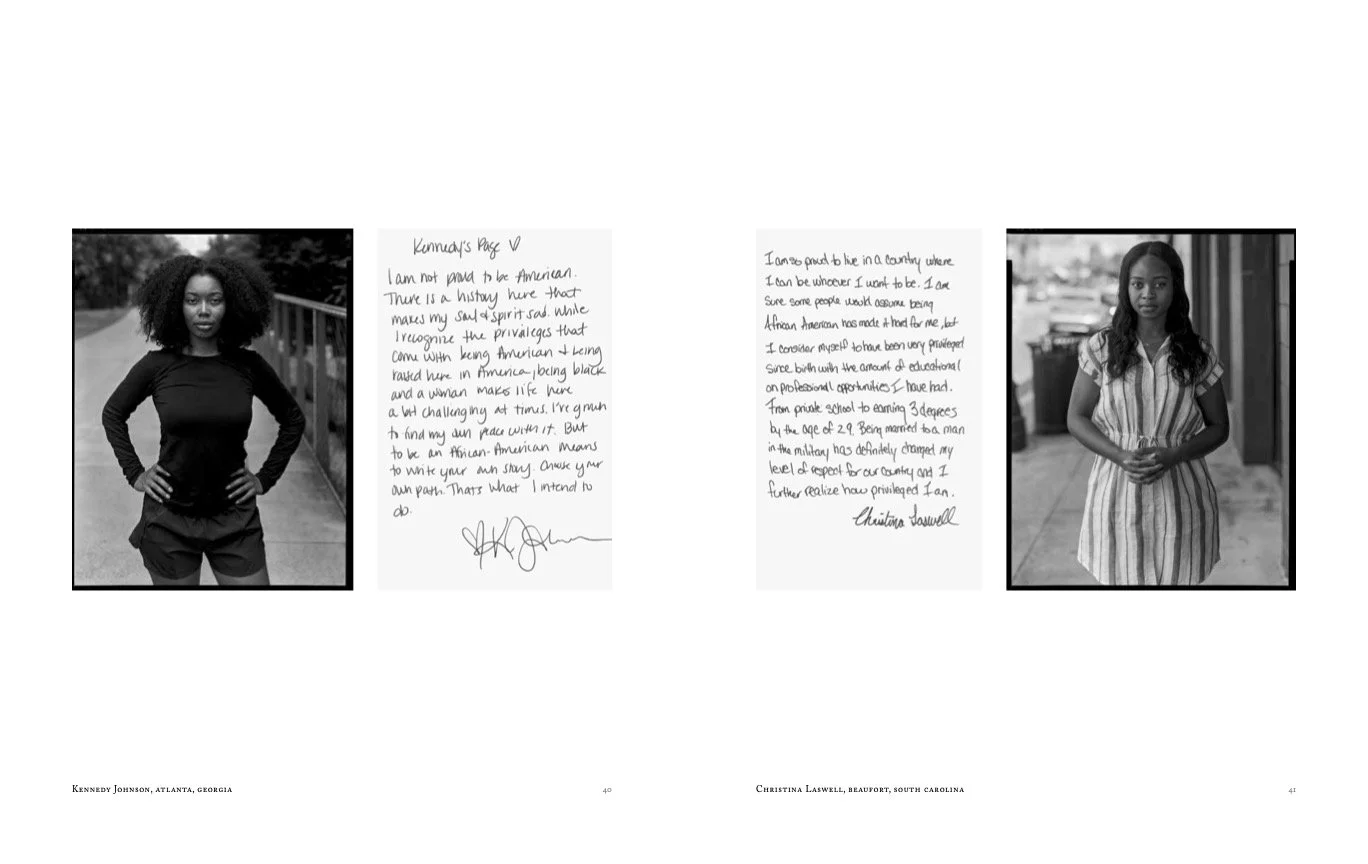I was giving a presentation to a group of photographers, showing them an early draft of my portrait project, What’s it like for you to be an American? when this question came up from one participant:
“I understand how you stopped people in the street, and how you got them to pose in front of the view camera, but how in the world did you get them to write such beautifully constructed answers?”
My reply to the question went something like this:
It’s not what I did, it’s what I believe. I believe that if I place a person into a position of feeling listened to, included, important and respected they will willingly share their thoughts.
As a career educator who worked with school-age children, I found it irresistible to compare these earnest adults leaning into my writing assign- ment to the eager youngsters com- posing autobiographical essays. There was always much to learn in reading students’ aspirations; similarly, there is much to learn about the aspirations for our country from the everyday Americans who contributed their handwritten thoughts and feelings to this project.
—Robert Kalman










